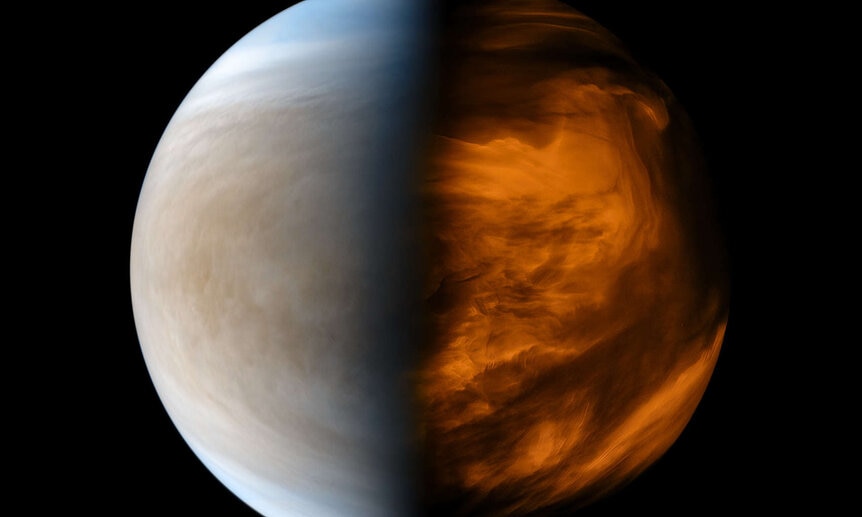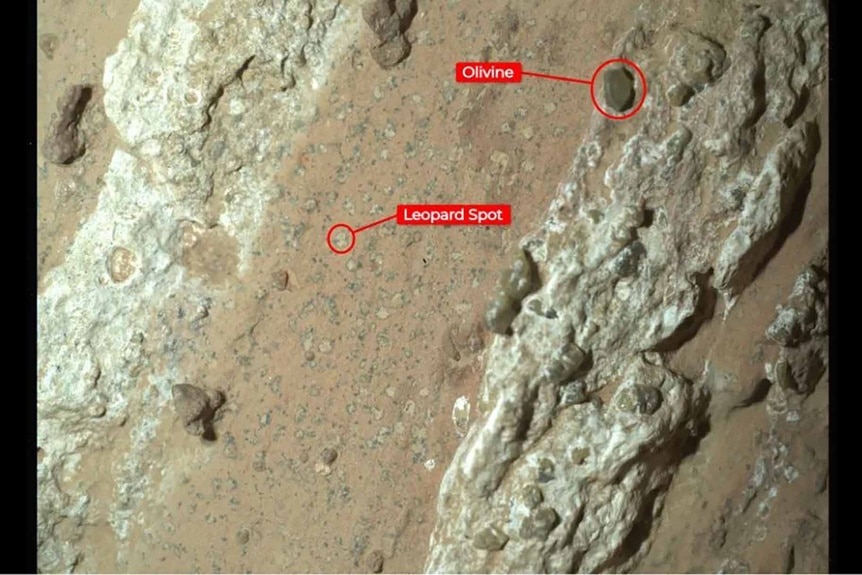Astronomers Find New Evidence in the Hunt for Alien Life on Mars and Venus
Scientists are hunting for hints of aliens in the rocks and in the clouds.
In Season 1 of SYFY's The Ark (streaming now on Peacock), a crew of interstellar explorers find themselves stranded between stars in a hobbled spacecraft. They come together to survive the immediate aftermath and, hopefully, make it to their destination at Proxima centauri b. In Season 2 (new episodes drop every Wednesday), things take a temporary turn for the weird.
The new Season 2 episode “Anomaly” finds the crew end up in a fractured warp bubble where the ordinary laws of physics no longer apply. There, they encounter a mysterious electrical entity carving a killer path through the ship. The crew and viewers are left to consider unusual alien behavior inside an environment totally unlike the one we’re used to, and to figure out whether what they are seeing is alive or not.
RELATED: Did We Just Meet The Ark's First Alien? Series Creators Explain That Shocking Creature
That’s more or less what real-world scientists are doing when investigating other worlds in our solar system. Without being able to go there ourselves, scientists rely on instruments orbiting other worlds or traipsing across their surfaces. And when they find something interesting, it’s the job of scientists to figure out if they are looking at alien geology and chemistry or alien life. Recently, real-world astronomers have detected possible indications of alien life on Mars and Venus.
Astronomers Detect Two Biosignatures in Venus’ Atmosphere
Astronomers first detected phosphine in telescope observations of Venus in 2020. At the time, there was a lot of speculation and excitement about the potential for life on Venus. That’s because on Earth, phosphine is produced by tiny microbes living in oxygen-poor environments. Unfortunately, additional attempts to replicate those results failed and the phosphine detection became just another false alien alarm.
Venus is a lot like Earth in many ways: it’s almost exactly the same size, rocky, and roughly within the Sun’s habitable zone. Unlike Earth, its environment went through a runaway greenhouse effect during its past, cranking up the planetary thermostat to deadly levels. Despite being considerably farther from the Sun than Mercury (67 million miles vs 43 million miles), Venus is way hotter. Average surface temperatures on our sister planet are approximately 860 Fahrenheit. It’s the sort of place that might be suitable for life if it weren’t such a hellscape, which is why finding biosignatures like phosphine is potentially exciting.
Now, using a new receiver mounted to the James Clerk Maxwell Telescope in Hawaii, astronomers have confirmed the presence of phosphine in the Venusian atmosphere. In fact, at a July 2024 meeting of the Royal Astronomical Society, astronomers revealed they have collected more than 140 times as much data than their previous observations, and the phosphine wasn’t alone. Scientists have also detected ammonia in the atmosphere, bringing the biosignature count to two.
Scientists speculate that if there are microbes living on Venus, they might create ammonia to lower atmospheric acidity and make local pockets of the planet more hospitable. Over time, that ammonia might rise through the atmosphere and into the higher Venusian cloud tops. It’s important to note that there are other potential explanations for these signals, given the extreme environmental conditions on Venus. No extant or ancient alien life has been confirmed on Venus or anywhere else.
NASA’s Perseverance Rover Found a Rock Which Might Harbor Alien Fossils on Mars
NASA’s Perseverance rover recently sampled a Mars rock which might hold some of the most promising evidence of ancient Martian life. The rover came across an arrow-shaped rock in Neretva Vallis, an ancient riverbed that once flowed into Jezero Crater.
The rock, which researchers have nicknamed “Chevaya Falls,” contains organic compounds, evidence of interactions with water, and signs of chemical reactions on the surface. When taken together, the qualities of Chevaya Falls might have provided conditions suitable for Martian microbes.
On July 21, 2024, Perseverance was conducting its 22nd rock core sampling when it came across a rock 3.2 feet across at its widest point. There are large white calcium sulfate veins running the length of the rock, punctuated by reddish bands of hematite, one of the minerals responsible for Mars’ characteristic red coloring. Looking closer, Perseverance found dozens of oddly shaped white splotches ringed in black, almost like leopard spots. The Planetary Instrument for X-ray Lithochemistry (PIXL), aboard Perseverance, confirmed the presence of iron and phosphate in the rings.
If life ever did exist on Mars, this is the sort of rock that might hold a record, but there’s a lot of steps between a possible detection and final confirmation. We’re only at the very beginning of studying Chevaya Falls, and Perseverance has already done all it can do. Learning more about this rock, and determining whether life ever existed on Mars, might require getting the rock samples home during NASA’s planned (but in danger) Mars Sample return mission.
Much like the unusual electrical entity in Season 2 of The Ark, it’s unclear if what we’re seeing on Mars and Venus are truly signs of extraterrestrial life or natural phenomena presenting in unfamiliar ways.
Catch up with humanity’s last hope in The Ark, with new episodes dropping Wednesday on SYFY, and the entirety of Season 1 now streaming on Peacock.





















































